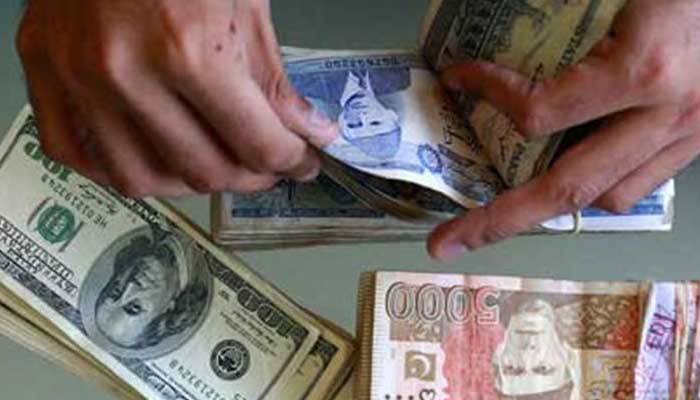Banks’ deposits rise 17pc to Rs19.7trln in November
KARACHI: Driven mostly by higher inflows of remittances from overseas, banking sector deposits swelled 17 percent to Rs19.7 trillion in November from Rs16.8 trillion a year ago, the central bank data showed on Wednesday.
Remittances rose 9.7 percent to $12.9 billion in July-November FY2022. The money sent home by Pakistani citizens employed abroad translated into local currency and was kept in bank accounts. Investments of banks in risk-free government securities also jumped 22 percent year-on-year to Rs13.6 trillion in November. The reason behind an increase in the banks’ investments in market treasury bills and Pakistan Investment Bonds (PIBs) is higher yields being offered on these papers in a high interest rates environment.
The SBP’s data showed that banks’ advances rose 18 percent to Rs9.6 trillion in November from Rs8.2 trillion a year earlier. Against the investments, the size of bank lending to the private sector remained low as the businesses were reluctant to take fresh loans due to the surge in the cost of borrowing.
Advance to deposit ratio increased 56 basis points (bps) year-on-year to 49 percent in November, while investment to deposit ratio clocked in at 69 percent, up 319bps from a year ago.
Analysts expect deposit inflows to maintain an upward trend after the State Bank of Pakistan (SBP) raised the cash reserves requirements for the banks to 6 percent from 5 percent last month. The SBP is hopeful banks will offer better returns to depositors in order to increase deposit mobilisation to cater to increased liquidity requirements.
SBP also advised banks to pass on the benefits of the interest rate rise to the depositors by offering higher returns to them on savings.
In contrast with increasing deposit growth, currency to deposit ratio (CIC) remains at an elevated level. The public prefers to hold cash and out of bank settlements.
The demand for cash increased multiple folds in the aftermath of the Covid outbreak, the SBP’s annual report on the State of Pakistan’s Economy for FY2021 said. The impact of cash transfers by the government via Ehsaas programme also contributed to the rise of CIC, it added.
“Despite several initiatives taken by the State Bank of Pakistan to encourage the use of digital banking channels, the cash penetration in the economy is still hovering at a high level both in comparison to the historical trend and also compared to other countries,” the SBP said.
“Pakistan’s currency to money supply is significantly higher compared to other regional economies like India, Egypt, Bangladesh, Turkey, etc. The recent surge in cash usage in the economy as well as issues such as withholding taxes on banking transactions for non-filers and increased scrutiny of financial transactions have also hurt deposit growth over the past few years.” “Consequently, the credit creation capacity of financial intermediaries has been negatively affected as captured by a fall in the money multiplier,” the central bank added.
-
 Brooklyn Beckham Finds It 'hard' To Keep Contact With Sister Harper
Brooklyn Beckham Finds It 'hard' To Keep Contact With Sister Harper -
 New Mystery About 'Ring Nebula' Shock Astronomers: Here's Why
New Mystery About 'Ring Nebula' Shock Astronomers: Here's Why -
 Prince Harry Picks PR Photos In Fear Of ‘bald Spots’
Prince Harry Picks PR Photos In Fear Of ‘bald Spots’ -
 Saying Prince Harry Will ‘probably Be Fine Isn’t Good Enough’, Expert Speaks Out
Saying Prince Harry Will ‘probably Be Fine Isn’t Good Enough’, Expert Speaks Out -
 Inside Meghan Markle’s Plans ‘With Love, Meghan’: Season 3 And Valentines Day Specials
Inside Meghan Markle’s Plans ‘With Love, Meghan’: Season 3 And Valentines Day Specials -
 King Charles Gets Caught Between A Rock And A Hard Place For The Second Time With Harry
King Charles Gets Caught Between A Rock And A Hard Place For The Second Time With Harry -
 Dolly Parton Hints At More Music As She Marks 80
Dolly Parton Hints At More Music As She Marks 80 -
 Simu Liu Reveals How His Family Treated Him After He Started Acting
Simu Liu Reveals How His Family Treated Him After He Started Acting -
 Gwyneth Paltrow Mourns Valentino As She Calls His Death 'end Of An Era'
Gwyneth Paltrow Mourns Valentino As She Calls His Death 'end Of An Era' -
 Prince Harry Questioned Over Desires Of Becoming ‘next King’
Prince Harry Questioned Over Desires Of Becoming ‘next King’ -
 Three-year-old Allegedly Tortured, Killed During Exorcism In California Church
Three-year-old Allegedly Tortured, Killed During Exorcism In California Church -
 Blake Lively Gushes She And Ryan Reynolds Are 'partners In Everything'
Blake Lively Gushes She And Ryan Reynolds Are 'partners In Everything' -
 Teyana Taylor Reflects On Co-parenting Journey With Ex Iman Shumpert
Teyana Taylor Reflects On Co-parenting Journey With Ex Iman Shumpert -
 Blake Shelton Recalls Being 'nervous Wreck' On Adam Sandler Film
Blake Shelton Recalls Being 'nervous Wreck' On Adam Sandler Film -
 Prince Harry's Lawyer Tells Court Daily Mail Complicit In Unlawful Acts
Prince Harry's Lawyer Tells Court Daily Mail Complicit In Unlawful Acts -
 Meghan Markle Named In Epstein Files With Ghislaine Maxwell?
Meghan Markle Named In Epstein Files With Ghislaine Maxwell?




